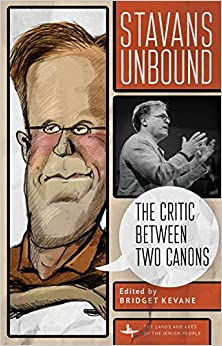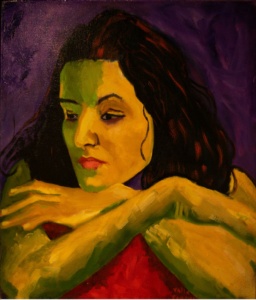 “Mexican Bandit or the Last Intellectual?: Ilan Stavans’s Notorious Raid on the Chicano Literary Canon”
“Mexican Bandit or the Last Intellectual?: Ilan Stavans’s Notorious Raid on the Chicano Literary Canon”
Carlos Nicolás Flores
“Papier-mâché skulls, rebozos, and statues of the Santa Muerte imbued the Café del Barrio with chic Mexican charm. Books by the latest Chicano authors on the wooden shelves and framed Frida Kahlo reprints on the walls filled the high-ceilinged room with the allure of new adventures. Years of work had culminated in our monthly literary evening at the Chicana poet Raquel Valle Sentíes’s home in Laredo’s historic district. The café became the meeting place of writers, artists, professors, and students seeking a cultural life similar to Austin’s or San Antonio’s, though on a more modest scale. For some of us, these poetry readings and other related projects, such as the South Texas Writing Project, gave us the sense that we were participating, if not in the Chicano movement of the 60s and 70s per se, then in one of its many reconfigurations in the far-flung provinces. However, while we admired and supported the groundbreaking efforts of writers such as Tomás Rivera, Rudolfo Anaya, Lorna Dee Cervantes, Américo Paredes, and others, we felt that overall the Chicano literary canon fell short of portraying the Mexican American border in all its color and complexity. Hence, we were committed to the creation of a literature—Chicano, Latino, whatever the latest label might be—that did.“
Excerpt from page 186
 “Raquel Valle Senties: Poet, Painter, and Playwright”
“Raquel Valle Senties: Poet, Painter, and Playwright”
Carlos Nicolás Flores
“I was lost.
“After walking past several offices, identical and nondescript in the new building, I now stood where the hall intersected another that led to more offices, their plate-glass doors displaying the occupants’ names and titles, but not the office I was looking for. The building, in fact, was not new, having been added to the west wing of the Killam Library in 1988. But the entire TAMIU campus, located on land donated by the wealthy Killam family northeast of Laredo, Texas, had always felt new. I had been hired to teach a class, and now I was looking for the Human Resources office. Walking down the hall, I checked names on office doors until I came to another intersection. I stopped.
“First, the Mexican colors struck me: bright red and orange and yellow and green, especially vivid in the school’s gray and blue institutional ambience. Then, there they were—the faces of women, only women. Since I seldom visited the campus and had never wandered this far in Killam Library, this was the first time I saw them displayed in all their splendor—Raquel Valle Sentíes’s series of portraits of prominent Chicana writers Sandra Cisneros, Lorna Dee Cervantes, Ana Castillo, Denise Chavez, and others.
“Having seen on Facebook one of her latest paintings, a Galveston beach landscape, I had meant to talk to Raquel and tell her I loved it. Now I needed to call her and tell her about my encounter with the portraits and that, in addition to being remembered for her poetry and plays, she will also definitely be remembered for the portraits.”
Excerpt from an essay to be published in an as-yet-untitled anthology featuring Sentíes’s portraits of prominent Chicana writers and edited by Norma Cantu